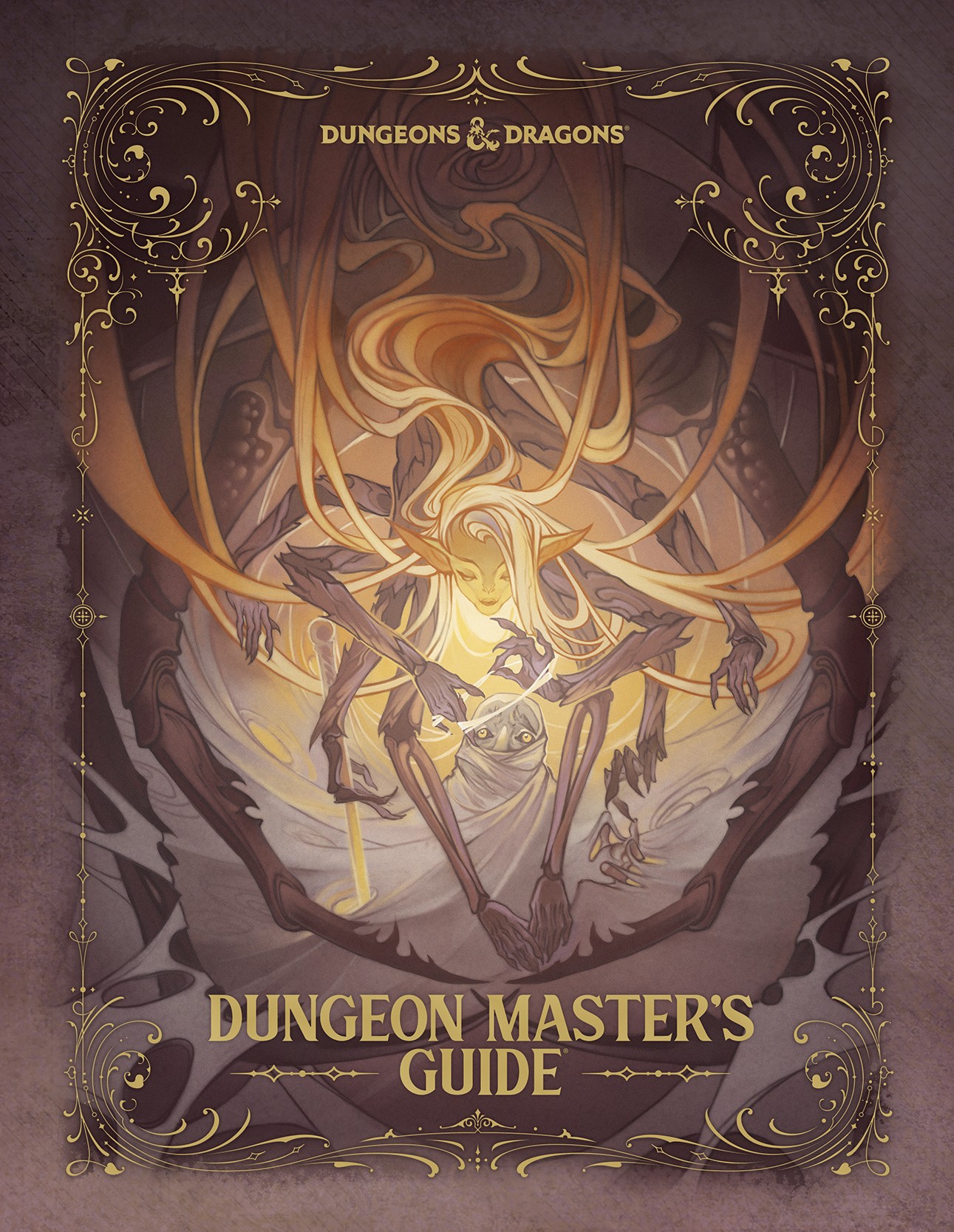The announcement of revised versions of the Player’s Handbook, Dungeon Master’s Guide (DMG), and Monster Manual for the 10th anniversary of 5E and the 50th anniversary of Dungeons & Dragons was met with mixed reactions. While some saw it as unnecessary, the prospect of a revamped DMG was intriguing, especially considering the vital role this book plays for Dungeon Masters (DMs). So, is the Dungeon Master’s Guide worth it? Let’s dive into a detailed review of the 2024 edition.
2014 vs. 2024: A Structural Overhaul
One consistent issue with previous DMGs has been their organization. While they contain essential rules and information for DMs, the structure often felt illogical. The 2014 edition, for instance, placed world-building in Chapter One, adventure creation in Chapter Three, and campaign tracking in Chapter Nine, with “Running the Game” in Chapter Eight.
The 2024 DMG addresses this with a more intuitive flow. Chapter One covers “The Basics,” followed by “Running the Game” in Chapter Two, “The DM’s Toolbox” in Chapter Three, “Creating Adventures” in Chapter Four, and “Creating Campaigns” in Chapter Five. This arrangement is more logical and facilitates easier navigation.
Furthermore, the 2024 DMG incorporates feedback from players and DMs since 2014, including the influx of new players drawn to 5E. Recognizing that many new players learn D&D from actual play videos like Critical Role, the guide aims to alleviate the intimidation factor and provide practical guidance for aspiring DMs.
The new DMG goes beyond being a mere rule compendium with magic items, gods, and cosmology. It seeks to empower new DMs with confidence and equip experienced DMs with strategies for efficient preparation, conflict resolution, and game scheduling.
Mastering the Game: A Comprehensive Guide
Every DMG edition includes information on running the game and handling players. The 2024 version delves deeper, acknowledging the uniqueness of each DM. It encourages DMs to draw inspiration from various sources but emphasizes the importance of developing their own style. The guide also stresses “ensuring fun for all,” advocating for alignment between the DM’s storytelling vision and the players’ preferences.
The 2024 DMG avoids imposing a single play style or story type. Instead, it promotes harmony between the DM and players, with sections dedicated to mutual respect, respect for players, and respect for the DM.
The “Running the Game” chapter covers both mechanical aspects and practical advice. It includes guidance on resolving outcomes (ability checks, attack rolls, saving throws, etc.), managing group size, and effective narration. It even offers advice on sharing DMing duties and handling player absences.
This chapter also provides valuable insights into the three pillars of D&D: role-playing/social interaction, exploration, and combat. This is particularly helpful for new DMs who may primarily focus on combat or pre-made adventures and struggle with other game aspects. The section addresses consequences, improvisation, and damage.
Even experienced DMs can benefit from these sections, as the Wizards team consulted with well-known DMs to ensure the advice is practical and effective.
The DM’s Toolbox: Practical Resources
While previous DMGs addressed “insanity” in a game, the 2024 DMG offers a more sensitive approach with a section on “Fear and Mental Stress.” The DM’s Toolbox contains a wealth of information, including alignments, chases, death, environmental effects, siege equipment, firearms, and supernatural gifts.
The updated DMG prioritizes the information that DMs are most likely to use. The 2014 edition was criticized for requiring constant flipping between sections. The 2024 edition streamlines the process by grouping related topics together.
Adventure and Campaign Creation
Adventure and campaign planning can be daunting for both new and experienced DMs. Chapters Four and Five aim to simplify the process without sacrificing imagination or creativity. Chapter Four covers premises, player hooks, conclusions, and rewards. It even includes guidance on planning exploration and social interaction encounters.
Chapter Four also features five sample adventures for levels 1, 2, 3, 5, and 7, demonstrating how adventures evolve as players level up. These adventures are designed to be broad and stripped down, showing that effective adventure prep can be done efficiently.
Chapter Five takes a similar approach to campaign creation, explaining how to start and end a campaign and highlighting the various types of fantasy that D&D can encompass. This chapter also showcases Greyhawk, the first official D&D setting. From its premise to its core material and gazetteer, Greyhawk serves as an example of setting creation and provides a foundation for DMs to customize their own version. The chapter details the primary sources of conflict for Greyhawk campaigns, such as evil dragons, the cult of Iuz, and Elemental Evil, offering suggestions for campaign expansion as players level up.
Reference Material and Expanded Content
The reference chapters cover cosmology and magic items, along with an expanded section on strongholds. The cosmology chapter explores the D&D multiverse and planar travel. The magic item chapter has been revised to be more concise and fun.
The art in the 2014 DMG was a highlight, but the 2024 edition presents a mixed bag. While the new art is well-done, the lighting and treatment sometimes make it difficult to fully appreciate the details.
Chapter Eight focuses on bastions, an expanded version of the stronghold rules from the prior DMG. “Bastions” encompass a variety of options, such as guild halls, theaters, and libraries. The bastion rules integrate with downtime rules, offering opportunities for downtime activities and events.
Final Thoughts: Is the Dungeon Master’s Guide Worth It?
Appendix A features a Lore Glossary, a valuable reference guide for famous names and locations. Appendix B offers a collection of maps by Dyson Logos for DMs to use as needed.
One notable omission is the lack of writing credits. While some content is taken from the 2014 DMG or other sources, the absence of writer credits feels disrespectful.
In conclusion, the 2024 DMG offers a more logical organization, expanded content on getting started, rapport building, and improvisation. The lore glossary and Greyhawk integration are excellent additions. Despite some drawbacks, such as the art treatment and lack of writing credits, the 2024 DMG is a significant improvement over the 2014 version.
So, is the Dungeon Master’s Guide worth it?
- If you own the 2014 DMG and find it cumbersome, the 2024 edition is worth considering.
- If you’re interested in building adventures and campaigns, the 2024 DMG is a valuable resource.
- If you’re new to the game, the 2024 DMG is an essential purchase.
Overall, the 2024 DMG is a well-crafted guide that can greatly enhance the DMing experience.

